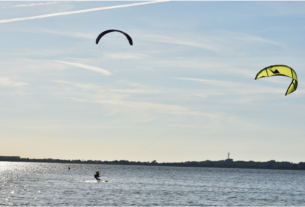LOCATION
It was in Kołobrzeg in 1000 that Prince Bolesław Chrobry and Emperor Otto III established a missionary bishopric to Christianise Pomerania. Pagan faith was so strong here that soon the bishopric declined and only in the mid-12thcentury did St Otto from Bamberg actually christened the Pomeranians. By the Reformation era, the area between Kołobrzeg and Koszalin belonged to the bishops from Kamień Pomorski, and then they became the haven of traditional Protestantism. Although the area underwent re-Catholicisation after 1945 and population exchange, similarly to whole Western Pomerania it is among the least religious regions of Poland. Koszalin (Kash. Koszaleno, Germ. Koslin), 54°11′25″N 16°10′54″E, is the main town of the region. Kołobrzeg possesses an airport open to private planes (Bagicz) as well as ferry connections with Bornholm (July and August).


photo source: own photos.
SIGHTSEEING
It is the most convenient to move around the area by car. Koszalin and Kołobrzeg are also connected by a railway line. Interesting landmarks are situated within 50 km from Koszalin. Kołobrzeg and Darłowo, popular seaside resorts mayprovidean alternative for its accommodation facilities. Grzybnica and Tychowo, the former sites of worship are widely available. Both Chełmska and Polanowska Sacred Mounts are cherished by religious orders, and the places are available throughout the day, similarly to churches in Koszalin, Kołobrzeg and Darłowo. Polanowska Sacred Mount is only accessible on foot (c.a. 10-minute walk).
ATTRACTIONS
In the centre of Koszalin, damaged in1945 there is the distinct restored Gothic Cathedral of Immaculate Conception of Blessed Virgin Mary, with modern furnishings and 19thcentury stained glass windows remembering Lutherans. Among other landmarks in the city there is also Gothic St Gertrud’s Chapel (a present day Evangelical Chapel), constructed on an octagonal ground plan, and the post-Cistercian Castle Church serving the purpose of an orthodox church. The Cistercians of Koszalin used to take care ofGóra Chełmska Hill, a place regarded as sacred by the Pomeranians. This is the present site of the Sanctuary of Mother Thrice Admirable of the Schoenstatt Sisters. In Darłowo, situatedwithin 40 km away there is magnificent Gothic St Mary’s Church, the necropolis of the Dukes of Pomerania as well as beautiful St Gertrud’s Church constructed on an octagonal ground plan. The furnishings in both the temples are in baroque style. Polanów, situated within 30 km from Koszalin boasts its Święta Góra Hill, the former place of religious worship, and subsequent St Mary’s Sanctuary. At present it is the seat of the Franciscan Fathers who have created here their hermitage and the Sanctuary of Our Lady Gate of Heaven. In the forests near Grzybnica you can see Pomerania’s most extensive complex of stone circles constructed by the Goths in the 1st– 3rdc. That was a sacred place, like the Trygław Stone in Tychowo, the biggest erratic boulder in Poland. At present it is crowned with a cross. In Kołobrzeg it is worth seeing mighty and abundantly furnished St Mary’s Basilica, renovated following the wartime damage.
INFORMATION SOURCES
Heritage Class: [ C ]Cultural Heritage
Subclass [SR] :BLUE and GREEN believes and religions
WEB PAGES
http://www.kolobrzeg.pl/
http://muzeum.koszalin.pl/files/grzybnica.pdf
http://pomorzezachodnie.travel
https://www.franciszkanie.gdansk.pl/klasztory-w-polsce/pustelnia-gora-polanowska/






